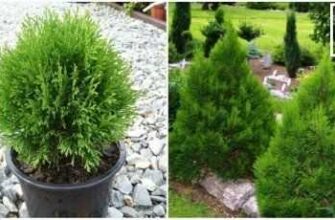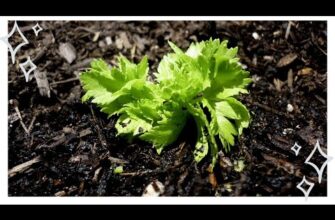- Выращивание амаранта в саду: основные принципы
- Выбор видов амаранта для выращивания
- Особенности выращивания амаранта в горшках и грядках
- Выращивание в горшках
- Выращивание в грядках
- Секреты ухода за амарантом: полив, подкормка, обрезка
- Полив
- Подкормка
- Обрезка
- Преимущества использования амаранта в пищевой промышленности
- Богатство сортов и разнообразие продуктов
- Пищевая ценность и полезные свойства
- Выращивание и производство зерна
- Полезные свойства амаранта для здоровья
- Разнообразие сортов амаранта: от классических до экзотических
- Секреты сбора и хранения семян амаранта
- Использование амаранта в косметологии и фармакологии
- Семена амаранта
- Пищевая ценность амаранта
- Сорта и виды амаранта
- Выращивание амаранта
- Амарант в культуре и религии разных народов
- Амарант: история происхождения и распространение в мире
- Преимущества амаранта:
- Амарант в современном ландшафтном дизайне и декоре
- Вопрос-ответ:
- Отличается ли выращивание амаранта от других культурных растений?
- Какой вид амаранта лучше всего выращивать?
- Когда лучше всего высевать семена амаранта?
- Как ухаживать за амарантом во время его роста?
- Как убрать семена амаранта?
- Видео:
- Амарант: выращивание и уход
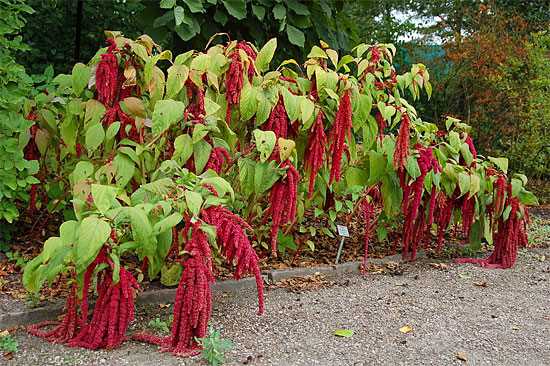
Амарант — это растение, которое издавна выращивается человеком. Существует множество видов и сортов этого растения, которые отличаются внешним видом и цветом листьев. Однако, все они имеют высокую пищевую ценность и являются ценным источником питательных веществ.
Главным достоинством амаранта являются его семена, которые содержат большое количество белка. Именно поэтому амарант считается ценным продуктом питания. Также, листья амаранта могут использоваться в пищу и имеют неплохие вкусовые качества.
Для выращивания амаранта необходимы теплый климат и плодородная почва. Растение отлично справляется с жарой и засухой, поэтому его можно выращивать даже в условиях суровой погоды. Однако, для качественного урожая необходимо обеспечить достаточное количество влаги и питательных веществ.
Амарант можно выращивать как в открытом грунте, так и в горшках на подоконнике. В качестве удобрения можно использовать компост или органические удобрения. Растение не требует особого ухода и практически не подвержено вредителям и болезням.
Выращивание амаранта в саду: основные принципы

Амарант – уникальное растение семейства амарантовых, представленное множеством видов и сортов. Это растение издревле известно человечеству как ценное зерно и целебное растение. Оно обладает высокой пищевой ценностью и используется в кулинарии, медицине и косметологии.
Для выращивания амаранта в саду можно выбрать различные виды и сорта, каждый из которых имеет свои особенности и преимущества. Например, существуют виды амаранта, у которых ценятся листья, а другие виды ценны своими семенами.
Выращивание амаранта в саду несложно, но требует соблюдения определенных принципов. Важно выбрать подходящее место для посадки, где растение будет получать достаточно солнечного света. Земля должна быть рыхлой и плодородной, с хорошей влагоудерживающей способностью.
Семена амаранта можно посеять непосредственно в грунт или начать выращивать рассаду. При посеве в грунт важно соблюдать оптимальную глубину заделки семян и не забывать о поливе. При выращивании рассады необходимо создать оптимальные условия для прорастания: тепло, свет, влага.
После посадки и прорастания растения нужно регулярно поливать, рыхлить почву и удалять сорняки. Важно также обеспечить растению достаточное количество питательных веществ путем подкормок. При созревании семян необходимо следить за их готовностью и правильно собирать.
Итак, выращивание амаранта в саду – увлекательное и полезное занятие. Учитывая основные принципы выращивания и выбирая подходящие виды и сорта, можно получить не только красивые растения, но и ценный урожай в виде семян и листьев с высокой пищевой ценностью.
Выбор видов амаранта для выращивания
Амарант — это семейство травянистых растений, которые отличаются своей неприхотливостью и высокой пищевой ценностью. Виды амаранта разнообразны и могут быть использованы в кулинарии, медицине и декоративных целях.
Сорта амаранта могут отличаться по форме и цвету листьев, а также по размеру и цвету семян. Некоторые сорта имеют крупные, сочные листья, подходящие для использования в салатах и прочих блюдах. Другие сорта имеют маленькие листья и в основном выращиваются для производства семян, которые используются в пищевой и медицинской промышленности.
Выращивание амаранта возможно как на открытой земле, так и в горшках. Для успешного выращивания необходимо выбрать подходящий для конкретного вида амаранта участок, где будет достаточно солнечного освещения и плодородной почвы. Растение хорошо переносит засуху и не требует особого ухода.
Один из основных аргументов в пользу выращивания амаранта — его высокая пищевая ценность. В его составе содержится много полезных веществ, включая белок, железо, кальций и витамины. Также амарант является источником антиоксидантов, которые способствуют укреплению иммунной системы и защите организма от свободных радикалов.
Виды амаранта различаются по своему внешнему виду и характеристикам. Некоторые виды имеют прямостоячие стебли и достигают впечатляющей высоты, другие — низкорослые и компактные. Некоторые виды амаранта имеют красивые, ярко-окрашенные листья, которые могут служить украшением сада или газонов.
Особенности выращивания амаранта в горшках и грядках
Амарант — это уникальное растение, которое выращивается как для получения зерна, так и для использования его листьев в кулинарии и медицине. Одним из способов выращивания амаранта является его разведение в горшках и грядках.
Выращивание в горшках

Для успешного выращивания амаранта в горшках необходимо выбрать достаточно большой горшок, чтобы корни имели достаточно места для роста. Подходящим грунтом для амаранта является смесь торфа и перегнойной земли. Семена амаранта следует посадить на глубину 1-2 см и увлажнить посадочный материал. Для успешного роста амаранту требуется яркий свет и теплая температура.
Выращивание в грядках
Амарант также можно выращивать в грядках. При подготовке почвы для амаранта рекомендуется добавить компост или перегной, чтобы обеспечить растению необходимые питательные вещества. Семена амаранта следует посадить на глубину около 1 см и разместить их на расстоянии 20-30 см друг от друга. После посадки растения следует полить и удобрить минеральными удобрениями.
Амарант имеет разнообразные сорта и виды, каждый из которых имеет свои особенности и преимущества. Некоторые сорта амаранта выращиваются для получения съедобных листьев, которые богаты витаминами и белком. Другие сорта выращиваются для сбора зерна, которое можно использовать в кулинарии и приготовлении различных блюд. Выращивание амаранта в горшках и грядках позволяет получить свежие листья и зерно прямо у себя дома или на даче, а также насладиться обильным урожаем этого полезного растения.
Секреты ухода за амарантом: полив, подкормка, обрезка
Амарант — это растение, которое можно выращивать как на грядках, так и в горшках на балконе или подоконнике. Для успешного выращивания амаранта необходимо обращать внимание на несколько важных моментов.
Полив
Амарант требует регулярного полива, особенно в период активного роста. Важно не допускать пересыхания почвы, но также не переувлажнять ее. Перед поливом необходимо проверять, чтобы верхний слой почвы был слегка высохшим. Оптимальная частота полива зависит от погодных условий и типа почвы. Следует помнить, что излишняя влага может привести к гниению корней.
Подкормка
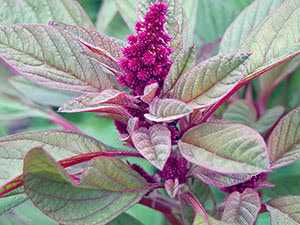
Для обеспечения хорошего роста и развития амаранту необходимо регулярно подкармливать его. Подкормку рекомендуется проводить каждые 2-3 недели. В качестве удобрений можно использовать комплексные минеральные удобрения или органические вещества, такие как перегной или птичий помет. Подкормку следует проводить внесением удобрения в почву или поливом раствором удобрения.
Обрезка

Обрезка амаранта помогает формировать куст и стимулирует его более активное ветвление. Для обрезки следует использовать острые садовые ножницы или нож. Рекомендуется удалять отцветшие соцветия, чтобы стимулировать образование новых почек и продолжение цветения. Также можно проводить формировочную обрезку для достижения желаемой формы растения. Обрезку следует проводить в середине весны или в начале лета.
Амарант имеет разнообразные виды, сорта и семена, которые могут использоваться как пищевая добавка или основной корм для животных. Листья амаранта богаты питательными веществами и имеют высокую пищевую ценность. Зерно амаранта также является ценным источником белка и других полезных веществ.
Преимущества использования амаранта в пищевой промышленности
Амарант — уникальное растение, которое имеет большое количество преимуществ и ценных свойств, которые оказывают положительное влияние на пищевую промышленность.
Богатство сортов и разнообразие продуктов

Амарант представлен множеством различных сортов, которые отличаются по цвету, вкусу и размеру листьев. Кроме того, амарант можно использовать как листья, так и семена, что позволяет создавать большое разнообразие продуктов на его основе.
Пищевая ценность и полезные свойства
Амарант обладает высокой пищевой ценностью. Он богат витаминами (в том числе витаминами А, С, Е, группы В), минералами (фосфор, калий, железо) и клетчаткой. Важно отметить, что амарант содержит большое количество белка, который легко усваивается организмом.
Выращивание и производство зерна
Амарант является неприхотливым растением, которое может вырастать в различных климатических условиях и почвах. Его выращивание не требует особых усилий и затрат. Благодаря этому амарант является перспективным сельскохозяйственным культурой. Зерно амаранта широко используется в пищевой промышленности для производства муки, хлопьев, мюсли и других продуктов.
Выводя всё выше сказанное, можно сделать вывод, что амарант — ценное растение, которое имеет множество преимуществ и может быть полезно в различных отраслях пищевой промышленности. Богатство сортов и разнообразие продуктов, пищевая ценность и легкое выращивание делают амарант востребованным и перспективным культурным растением.
Полезные свойства амаранта для здоровья
Амарант — это растение, известное своими многочисленными сортами и видами. Однако, помимо своей внешней красоты, амарант обладает исключительной пищевой ценностью. Листья амаранта содержат множество полезных веществ, которые могут оказать благотворное влияние на здоровье человека.
Семена амаранта — настоящий сокровищницы белка. В семенах этого растения содержится более 15% белка, что делает их ценным дополнением к рациону для вегетарианцев и спортсменов. Белок амаранта содержит все необходимые аминокислоты, включая редкие и необходимые организму.
Зерно амаранта — очень популярный продукт, который используется в кулинарии разных стран. Оно богато витаминами и минералами, такими как железо, кальций, фосфор и цинк. Потребление зерна амаранта может помочь укрепить кости, улучшить работу сердечно-сосудистой системы и нормализовать обмен веществ.
Необходимо также отметить, что листья амаранта являются ценным источником витаминов и минералов. Они содержат витамины А и С, железо, кальций и бета-каротин. Потребление листьев амаранта может укрепить иммунную систему, помочь в борьбе с воспалениями и способствовать общему улучшению состояния организма.
Так стоп!!! Вы всё ещё не подписаны на наши каналы в Телеграмм и Дзен? Посмотрите: ТГ - (@historyfantasydetectivechat) и Дзен (https://dzen.ru/myshortsstorys)
Выводящие, очищающие и противовоспалительные свойства амаранта делают его ценным продуктом для поддержания здоровья. Благодаря разнообразию сортов и видов амаранта, каждый человек может найти для себя подходящий вариант, который будет способствовать его здоровью и благополучию.
Разнообразие сортов амаранта: от классических до экзотических

Амарант – это растение, которое известно человечеству уже на протяжении десятилетий. Оно выращивается в разных частях мира и имеет разнообразные сорта. Каждый сорт амаранта имеет свои особенности, пищевую ценность и способ применения.
Классические сорта. В основном, амарант выращивается для получения пищевой ценности, в особенности для использования семян и зерна. Существуют несколько классических сортов амаранта, отличающихся своими характеристиками. Например, сорт «Красный амарант» имеет красные листья и отличается высоким содержанием белка. Его семена можно использовать для приготовления различных блюд.
Экзотические сорта. Вместе с классическими сортами амаранта, существуют и экзотические виды растения. Они могут отличаться по форме листьев, окраске или размеру. Например, сорт «Гигантский амарант» имеет огромные листья и высокий урожай зерна. Этот сорт часто используется для декоративных целей или для производства муки.
Каждый сорт амаранта имеет свои особенности и применение. Изучение разнообразия сортов амаранта позволяет выбрать наиболее подходящий для выращивания и использования в различных сферах. Благодаря своей пищевой ценности и полезным свойствам, амарант становится все более популярным среди садоводов и производителей пищевой продукции.
Секреты сбора и хранения семян амаранта
Амарант — это растение, известное своей высокой пищевой ценностью и широким разнообразием сортов. Главным источником полезных веществ в амаранте являются его семена. Правильный сбор и хранение семян амаранта позволяют сохранить их пищевую ценность и использовать в различных целях.
Для сбора семян амаранта необходимо выбрать зрелые и сухие плоды. Разные виды и сорта амаранта имеют разные сроки созревания, поэтому рекомендуется следить за состоянием растений и собирать семена, когда они станут легко отделяться от растения. При сборе семян следует обратить внимание на то, чтобы они не были повреждены или поражены болезнями.
Семена амаранта можно использовать для выращивания новых растений или применять в пищу. Для сохранения их пищевой ценности и предотвращения порчи рекомендуется правильно хранить семена. Семена амаранта хранятся в сухом и прохладном месте, в контейнерах, закрытых плотно. Желательно использовать стеклянные или пластиковые контейнеры, чтобы предотвратить попадание влаги и насекомых.
Также для удобства хранения можно отделить семена от листьев и других частей растения. Для этого семена можно просеять через мелкое сито или использовать пластиковые пакеты, в которых семена остаются на дне, а лишние части растения остаются на поверхности. При правильном сборе и хранении семян амаранта можно сохранить их пищевую ценность в течение длительного времени и использовать по мере необходимости.
Использование амаранта в косметологии и фармакологии

Амарант – это растение, которое известно своей пищевой ценностью и уникальными свойствами. Оно широко используется в косметологии и фармакологии благодаря своим полезным свойствам.
Семена амаранта
Семена амаранта являются богатым источником питательных веществ, включая белки, жиры и углеводы. Они содержат большое количество полезных витаминов и минералов, таких как витамин Е, витамин В6, кальций и железо. Семена амаранта активно используются в производстве косметических и фармацевтических препаратов.
Пищевая ценность амаранта
Амарант имеет высокую пищевую ценность благодаря своему богатому химическому составу. Он содержит все необходимые аминокислоты, витамины и минералы. Благодаря этому амарант активно используется в косметологии для создания косметических средств, которые улучшают состояние кожи и волос.
Сорта и виды амаранта

Существует множество сортов и видов амаранта, каждый из которых имеет свои уникальные свойства и характеристики. Некоторые сорта амаранта обладают высоким содержанием антиоксидантов, которые помогают бороться с повреждениями кожи и замедляют процесс старения.
Выращивание амаранта
Выращивание амаранта является достаточно простым процессом, который может быть осуществлен как в саду, так и на приусадебном участке. Амарант требует минимального ухода и хорошо растет на разных типах почвы. Выращивание амаранта позволяет получить свежие листья и зерно, которые могут быть использованы в косметологии и фармакологии.
Амарант в культуре и религии разных народов
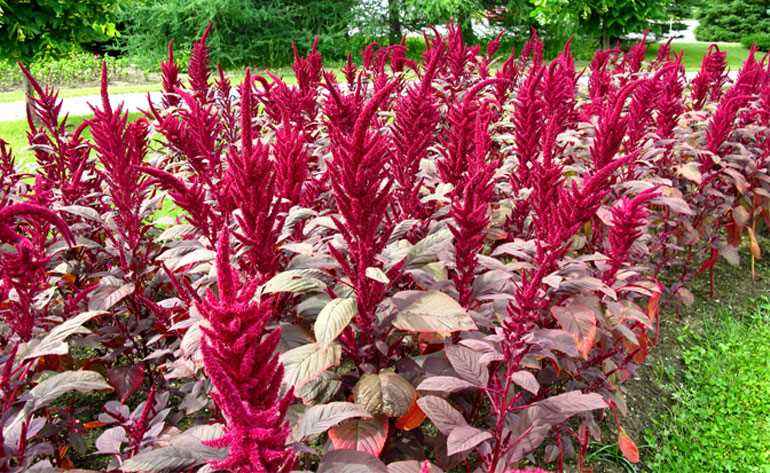
Амарант – растение, которое имеет глубокие корни в культуре и религии разных народов. Его семена и листья считались священными и использовались в различных религиозных обрядах и церемониях.
В древней Греции амарант был посвящен богине Афине, символизируя мудрость и вечную жизнь. Семена амаранта использовались в пищевых ритуалах и приготовлении особого блюда – амарантового кекса.
В индейской культуре амарант считался символом бессмертия и был важным компонентом религиозных обрядов. Листья амаранта использовались в церемониях жертвоприношений.
В Мексике амарант носил имя «хуатли» и был основой для приготовления традиционного блюда «атолль». Это было национальное блюдо, которое мексиканцы считали символом своей культуры и национального достояния.
Сегодня амарант продолжает занимать важное место в культуре и религии многих народов. Он выращивается не только из-за своих полезных свойств, но и из-за связанных с ним духовных и символических значений.
Амарант: история происхождения и распространение в мире

Амарант — это растение семейства амарантовых, которое имеет древнюю историю происхождения. Оно было выращено и использовано людьми уже более 8 тысяч лет назад. Сегодня в мире существует более 60 видов амаранта, которые отличаются своими характеристиками и свойствами.
Одной из главных особенностей амаранта являются его семена, содержащие много белка и полезных микроэлементов. Именно поэтому амарант широко используется в пищевой промышленности и при рациональном питании. Листья амаранта также обладают пищевой ценностью и часто используются в кулинарии.
Выращивание амаранта возможно в различных климатических условиях, и это растение распространено по всему миру. Особенно популярным его выращивание стало в последнее время благодаря его высокой урожайности и простоте в уходе. Существуют различные сорта амаранта, которые отличаются по цвету, размеру и вкусовым качествам.
Преимущества амаранта:
- Богатство пищевой ценности: амарант содержит множество полезных веществ, таких как витамины, минералы и антиоксиданты.
- Уникальные свойства семян: семена амаранта богаты белком, жирными кислотами и клетчаткой, что делает их ценным продуктом питания.
- Универсальность использования: амарант может быть использован в кулинарии для приготовления различных блюд, а также в фармацевтической и косметической промышленности.
- Экологическая ценность: выращивание амаранта не требует больших затрат на удобрения и пестициды, что делает его экологически чистым продуктом.
Выводя все вышеперечисленные факторы, можно с уверенностью сказать, что амарант заслуживает внимания как ценный и полезный продукт питания, который может быть использован в различных сферах жизни человека.
Амарант в современном ландшафтном дизайне и декоре
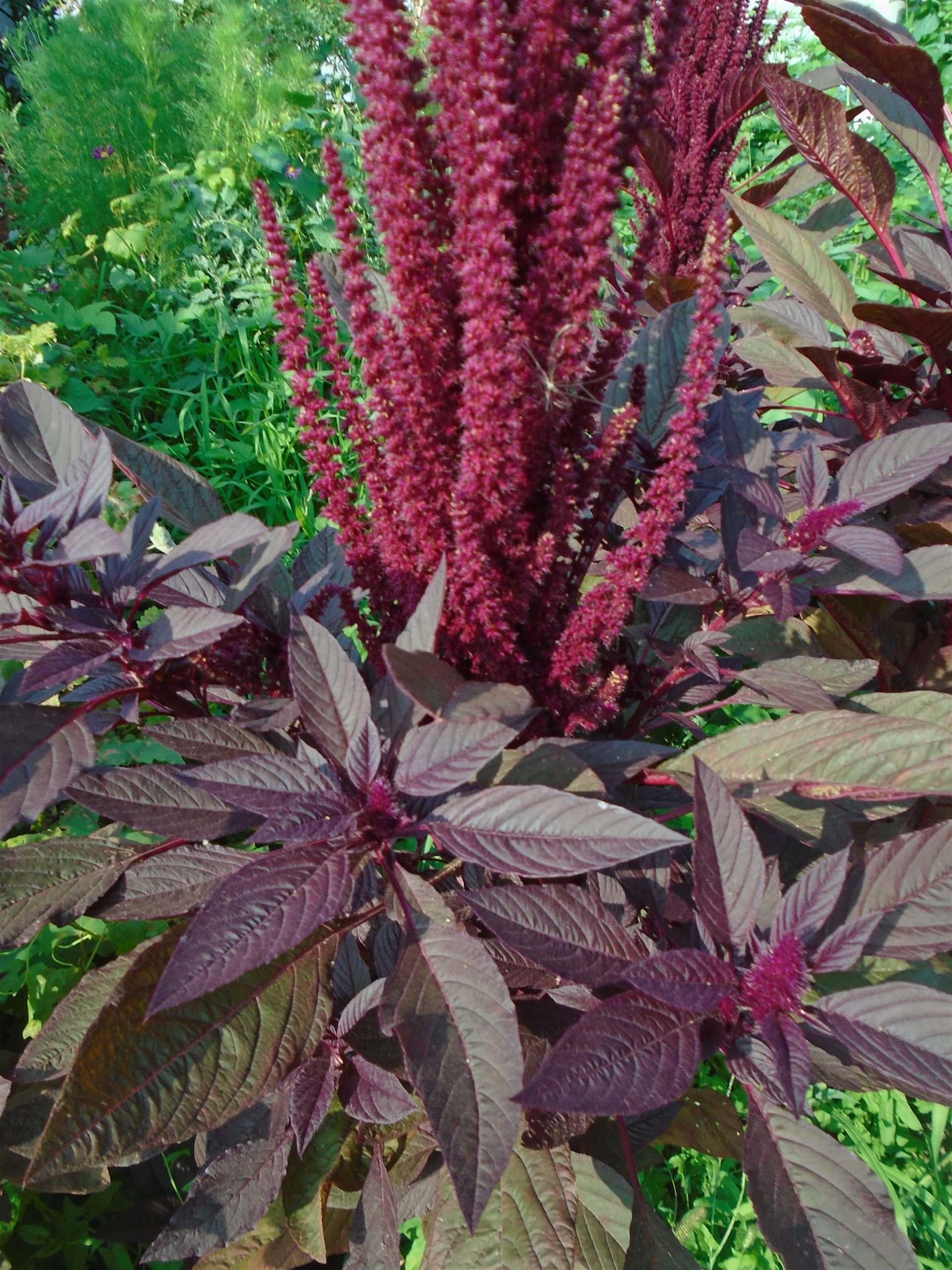
Амарант, благодаря своей красивой и яркой листве, является популярным растением в современном ландшафтном дизайне. Существует множество разнообразных сортов и видов амаранта, каждый из которых отличается своей уникальной формой и цветом листьев.
Одним из самых популярных сортов амаранта является «Золотой амарант». Его золотистые листья и высота до 2 метров делают его прекрасным элементом декора и украшением ландшафта. Другим интересным сортом является «Медовый амарант» с ярко-красными листьями и великолепными розовыми цветками.
Однако, амарант не только красив, но и полезен. Зерно амаранта является ценным источником питательных веществ и белка. Семена амаранта содержат все необходимые аминокислоты, витамины и минералы, что делает его незаменимым продуктом для вегетарианцев и людей, следящих за своим здоровьем.
Пищевая ценность амаранта также подтверждается его использованием в качестве ингредиента в различных блюдах. Семена амаранта можно добавлять в салаты, каши, запеканки и выпечку. Они не только придают блюдам интересный вкус, но и обогащают их питательными веществами.
Таким образом, амарант является не только красивым растением для ландшафтного дизайна, но и ценным источником питательных веществ. Его разнообразные сорта и виды позволяют использовать амарант как в декоративных целях, так и в кулинарии для придания блюдам уникального вкуса и питательной ценности.
Вопрос-ответ:
Отличается ли выращивание амаранта от других культурных растений?
Да, выращивание амаранта имеет свои особенности. Он требует света, тепла и умеренного полива. Также он предпочитает плодородные почвы и не выносит затопления.
Какой вид амаранта лучше всего выращивать?
Наиболее популярными видами амаранта являются: красный, зеленый и золотистый. Однако выбор вида зависит от целей выращивания. Например, красный амарант часто используется для декоративных целей, зеленый — для пищевых, а золотистый — для медицинских.
Когда лучше всего высевать семена амаранта?
Семена амаранта можно высевать весной, когда почва прогреется до +10 градусов. Также семена можно высевать в горшки в закрытом помещении и высаживать рассаду на открытый грунт в более поздние сроки.
Как ухаживать за амарантом во время его роста?
Во время роста амарант требует регулярного полива и рыхления грунта. Также рекомендуется удалять сорняки и осуществлять обрезку, чтобы улучшить вентиляцию растений и убрать увядшие или поврежденные листья.
Как убрать семена амаранта?
Семена амаранта можно собирать, когда они полностью созреют и начинают осыпаться. Для этого стебли растения с семенами можно подвязать над бумажным пакетом и потрясти, чтобы семена попали в пакет. Затем семена нужно просушить и хранить в темном и прохладном месте.




